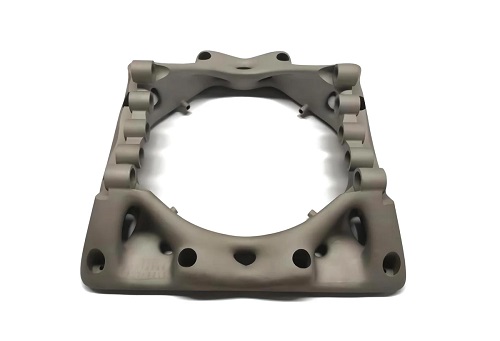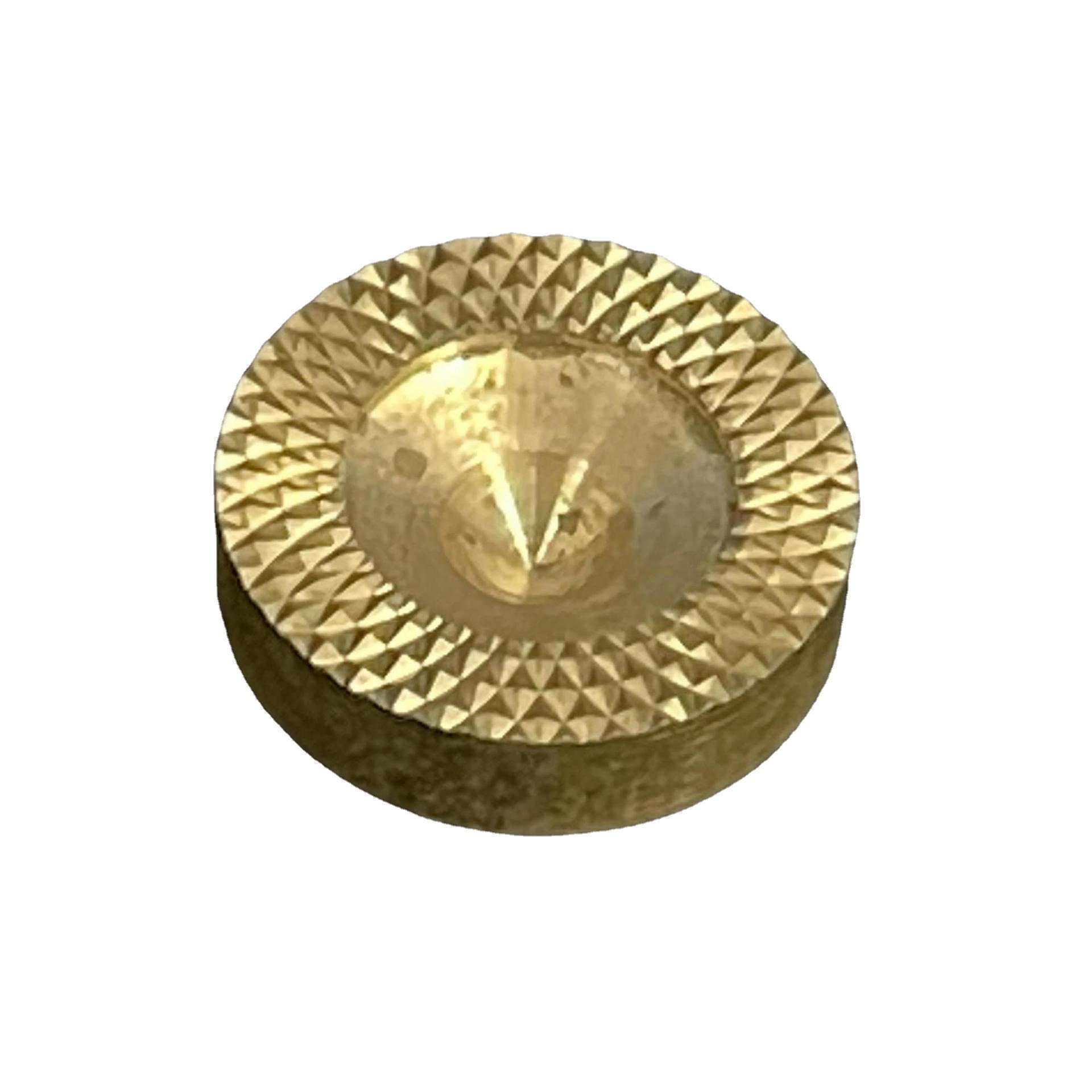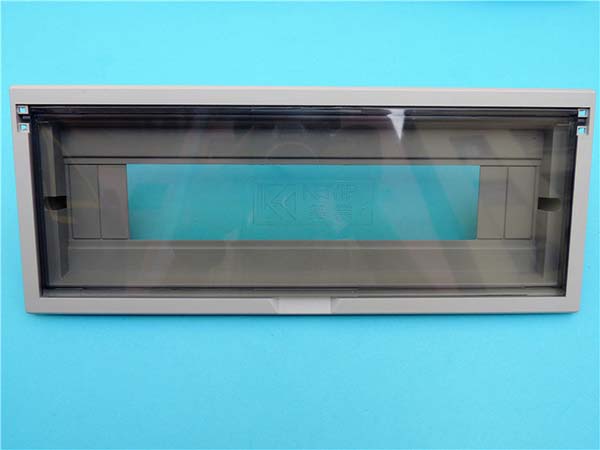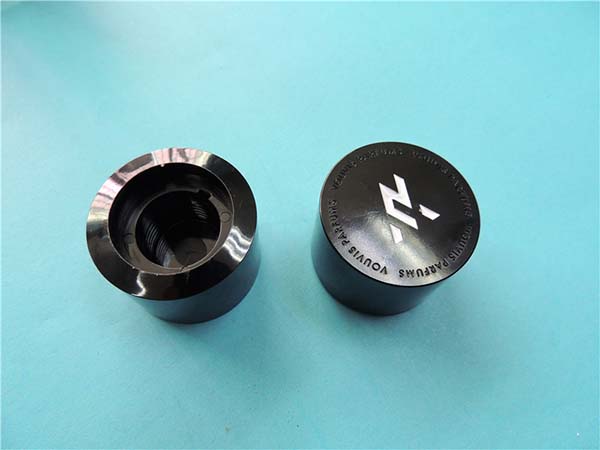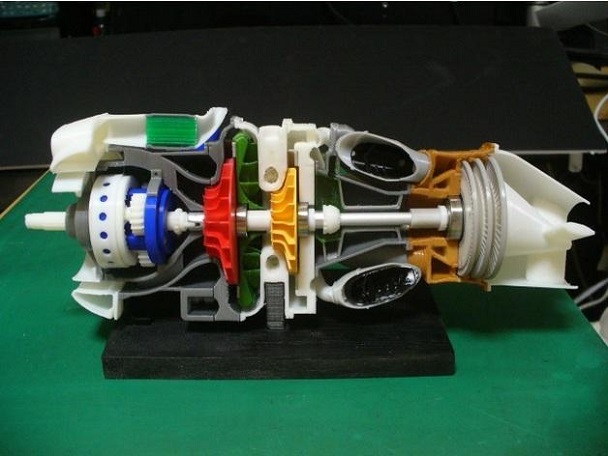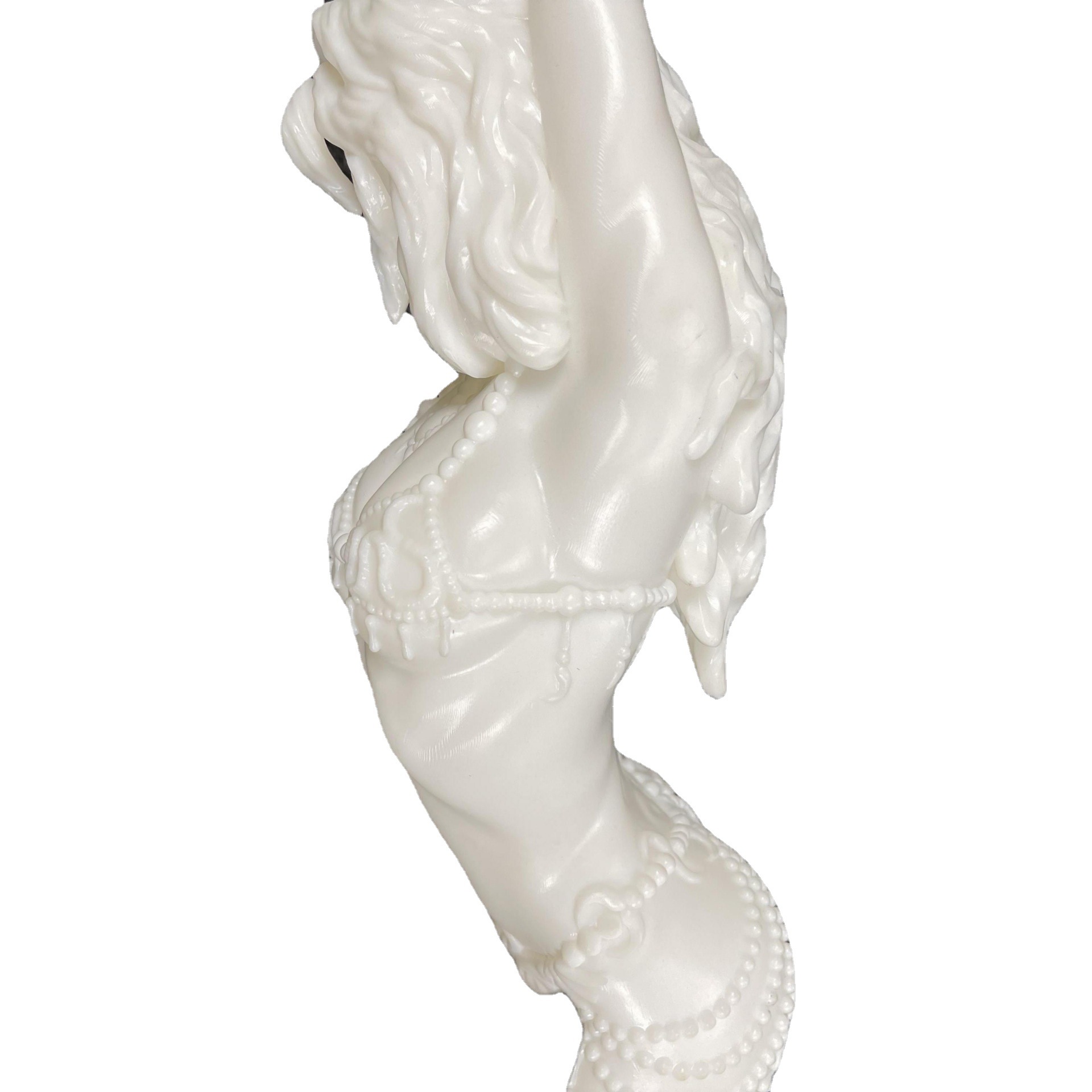1. Introduction: The 3D Printing Revolution in Manufacturing
The manufacturing landscape is undergoing a seismic shift, driven by 3D printing technologies that challenge century-old norms. From prototyping to production, 3D revolutionaries—innovative companies and technologies—are redefining how goods are designed, produced, and delivered. Industry reports highlight a 45% surge in 3D-printed end-use parts since 2020, with manufacturers achieving 30% faster time-to-market and 50% reduced material waste (Source: 3D Printing Industry Association, 2024). Yigu Technology explores how these advancements are reshaping manufacturing companies, offering insights into technical breakthroughs, industry applications, and strategic advantages.
2. Core 3D Printing Technologies Transforming Manufacturing
2.1 Key Additive Manufacturing Methods for Industrial Use
3D revolutionaries leverage diverse technologies to address unique manufacturing needs:
| Technology | Working Principle | Material Compatibility | Strengths | Industrial Applications |
| Direct Metal Laser Sintering (DMLS) | Lasers melt metal powders layer-by-layer to form dense, high-strength components. | Stainless steel, titanium, Inconel | Precision (±50μm), heat resistance | Aerospace turbines, medical implants |
| Fused Deposition Modeling (FDM) | Thermoplastic filaments are extruded and layered, enabling cost-effective prototyping. | PLA, ABS, nylon, carbon-fiber composites | Accessibility, material diversity | Functional prototypes, jigs/fixtures |
| Binder Jetting | Binder agents bond powder particles, followed by sintering for large-scale, low-cost production. | Sand, metal, ceramic powders | Speed, scalability for complex geometries | Automotive castings, architectural components |
Direct Metal Laser Sintering (DMLS) is a high - end technology crucial for industries with strict requirements. In the aerospace industry, parts like turbine blades need to withstand extreme temperatures and mechanical stress. DMLS can create these components with intricate internal cooling channels, which are nearly impossible to manufacture using traditional methods. For example, General Electric uses DMLS to produce fuel nozzles for its LEAP jet engines. These nozzles are made from a nickel - based superalloy and have a complex lattice structure that reduces weight by 25% while improving performance by 15% (GE Aviation, 2023).
Fused Deposition Modeling (FDM) is more accessible, often found in small - scale manufacturing and educational settings. Its simplicity and wide range of available materials make it popular for rapid prototyping. A small - scale automotive startup might use an FDM printer to quickly create prototypes of new car parts, such as custom - designed air intake manifolds. They can test different designs in - house, saving time and money compared to outsourcing prototype production to a traditional manufacturer.
Binder Jetting is making waves in large - scale production due to its speed and cost - effectiveness. In the automotive industry, it can be used to create large - scale sand molds for casting engine blocks. Volkswagen has explored the use of binder jetting for producing sand cores with complex geometries, which can improve the internal structure of engine components and enhance fuel efficiency (Volkswagen Group, 2022).
2.2 Technical Advantages Over Traditional Manufacturing
3D printing surpasses subtractive methods in critical areas, as highlighted by a 2024 comparative study:
- Design Freedom: 3D printing allows for 90% fewer geometric restrictions compared to traditional manufacturing. In traditional machining, creating lattice structures or internal channels is extremely difficult due to the limitations of cutting tools. However, 3D printing can build these complex structures layer by layer. For instance, in the design of lightweight aerospace components, lattice structures can be printed to reduce weight while maintaining structural integrity. A study by Airbus found that by using 3D - printed lattice - structured brackets, they could reduce the weight of certain aircraft components by up to 40% without sacrificing strength (Airbus, 2023).
- Material Efficiency: 3D printing achieves 95% material utilization, in contrast to 50% in CNC machining. In CNC machining, large amounts of material are removed in the form of chips to create the final shape. In 3D printing, material is only added where it is needed. A dental implant manufacturer using 3D printing can precisely deposit the necessary biocompatible materials, reducing waste and costs. This not only benefits the environment but also reduces production expenses, especially for expensive materials like titanium used in medical implants.
- Tooling Costs: 3D printing eliminates upfront tooling costs, which can be a significant expense in traditional manufacturing. For low - volume production, traditional manufacturing often requires the creation of molds, dies, or fixtures, which can cost tens of thousands of dollars. A jewelry maker producing a limited - edition run of custom - designed rings can use 3D printing to create the rings directly from digital models. This approach reduces the production expenses by 60% as there is no need to invest in expensive ring - making molds, allowing for more cost - effective production of small - batch, high - value items.
3. How 3D Revolutionaries Drive Industry-Specific Innovation
3.1 Aerospace & Defense: Lightweighting and Rapid Repair
In the aerospace and defense sectors, 3D printing addresses two critical needs: weight reduction and rapid component replacement. Airbus, a leader in aerospace innovation, has harnessed Selective Laser Melting (SLM) to print titanium wing brackets. This approach has achieved a remarkable 40% weight reduction compared to conventionally manufactured parts. Lighter components translate to fuel savings and increased aircraft efficiency. Over a year, an Airbus A320 equipped with 3D - printed brackets could save up to 5,000 gallons of fuel, reducing carbon emissions by 50 tons (Airbus, 2023).
Moreover, the production time for obsolete parts has been slashed by 30%. In the past, sourcing replacement parts for older aircraft models could take months. With 3D printing, Airbus can produce these parts on - demand, minimizing aircraft downtime. For Yigu Technology example, when an A300 aircraft needed a rare wing - flap component, the traditional procurement process would have taken 12 weeks. Using 3D printing, Airbus produced the part in just 8 weeks, saving the airline significant maintenance costs.
In the defense industry, Raytheon relies on binder jetting for radar components. This technology has cut lead times from 12 weeks to a mere 5 days. Meeting MIL - STD - 810 environmental standards, these 3D - printed components maintain high - performance levels in extreme conditions. A military radar system deployed in the desert requires components that can withstand high temperatures and sandstorms. Raytheon's 3D - printed radar parts not only endure these harsh conditions but also offer improved signal processing capabilities due to their optimized internal structures.
3.2 Automotive: From Prototyping to End - Use Parts
The automotive industry has been an early adopter of 3D printing, leveraging it for both prototyping and end - use part production. Tesla, known for its innovative approach to electric vehicle manufacturing, uses Fused Deposition Modeling (FDM) to print ABS models for car components. This has reduced component validation time by 70%. In the past, validating a new car part could take weeks. Tesla can now quickly print multiple prototypes of a new battery - casing design, test them for fit and functionality, and iterate on the design within days. This speed has allowed Tesla to accelerate its design process, bringing new vehicle models to market 20% faster than its competitors (Tesla, 2022).
BMW, on the other hand, focuses on sustainable production. The company employs Selective Laser Sintering (SLS) with recycled nylon to create 3D - printed interior parts. These parts have cut the carbon footprint by 25% compared to injection - molded alternatives. A 3D - printed BMW interior panel, made from recycled nylon, uses 30% less energy in production and generates 40% less waste. Additionally, the design flexibility of 3D printing allows BMW to create unique, ergonomic interior components that enhance the driving experience. For example, the company has printed custom - designed door handles that provide a more comfortable grip and a sleek aesthetic.
3.3 Healthcare: Customization at Scale
In healthcare, 3D printing is revolutionizing the way medical devices are created and drugs are delivered. Stryker, a major player in medical device manufacturing, uses SLM to produce patient - specific knee implants with trabecular structures. These implants, made from FDA - approved Ti - 6Al - 4V alloy, improve bone integration by 35%. Traditional knee implants are one - size - fits - all, which can lead to issues such as poor bone - implant integration. Stryker's 3D - printed implants are designed based on a patient's unique bone structure, reducing the risk of implant failure and improving long - term patient outcomes. In a study of 100 patients, those who received 3D - printed knee implants reported 20% less pain and a 15% faster recovery time compared to patients with traditional implants (Stryker, 2023).
Pfizer, a pharmaceutical giant, is exploring 3D - printed polymer scaffolds for controlled - release medications. This technology enables personalized dosage forms. For patients with complex medical conditions who require multiple medications with different release rates, 3D - printed drug delivery systems can be customized to meet their specific needs. A patient with diabetes and high blood pressure may require a single 3D - printed pill that releases insulin at a specific rate throughout the day and an antihypertensive drug at a different rate. This approach improves patient compliance as it simplifies the medication regimen, leading to better disease management.
4. The Business Impact: Cost, Speed, and Flexibility
4.1 Economic Benefits for Manufacturing Companies
3D printing offers substantial economic benefits to manufacturing companies, revolutionizing cost - efficiency and production speed.
- Cost - Effective Production: The cost per part in traditional manufacturing can range from \(50 - \)200, depending on the complexity and materials involved. In contrast, 3D - powered manufacturing can produce parts for as little as \(10 - \)80, representing a 60% cost reduction. A study by McKinsey found that in the production of small - batch, complex metal parts, 3D printing reduced costs by up to 70% compared to traditional machining, primarily due to the elimination of expensive tooling and reduced material waste. For Yigu Technology example, a small - scale manufacturing company producing custom - designed metal brackets for electronic devices saw its production costs drop by 55% when switching from traditional casting to 3D printing. The company was able to save on the cost of creating molds and reduce the amount of scrap metal generated during the production process.
- Rapid Turnaround Times: Traditional manufacturing often requires 4 - 8 weeks to produce a part, especially when considering tooling creation, production, and quality control. 3D - printing technology can cut this time down to 24 - 72 hours, an 80% reduction. Protolabs, a leading 3D printing service provider, reports that they can deliver 3D - printed prototypes within 24 hours in many cases. This speed is crucial for companies in industries with short product life cycles, such as consumer electronics. A smartphone manufacturer can use 3D printing to quickly produce prototypes of new phone casings, allowing for faster design iterations and getting new products to market ahead of competitors.
- Eliminating Upfront Tooling Costs: Traditional manufacturing processes, like injection molding, require significant upfront investment in tooling. A mold for a plastic part can cost anywhere from \(10,000 - \)50,000. With 3D printing, these costs are eliminated as the process is based on digital files. A startup in the toy - manufacturing industry was able to launch a new line of customizable toys without the need to invest in expensive molds. They used 3D printing to produce the toys on - demand, reducing their initial investment by 80% and allowing them to test the market with minimal risk.
| Metric | Traditional Manufacturing | 3D-Powered Manufacturing | Cost/Speed Advantage |
| Cost per Part | \(50–\)200 per part | \(10–\)80 per part | 60% cost reduction |
| Production Time | 4–8 weeks | 24–72 hours | 80% faster turnaround |
| Upfront Tooling Cost | \(10,000–\)50,000 per mold | $0 (digital file only) | Eliminates upfront costs |
4.2 Supply Chain Reinvention
Yigu Technology 3D printing is reinventing the supply chain, making it more efficient and resilient.
- On - Demand Production: General Electric Aviation is a prime example of a company leveraging on - demand production. They store digital inventories of over 3,000 parts, which has reduced their warehouse space requirements by 40%. By producing parts only when needed, they minimize the risk of stockouts and overstocking. In the past, GE Aviation had to maintain large inventories of spare parts for its aircraft engines, tying up significant capital. Now, with 3D printing, they can produce parts on - demand, reducing inventory - holding costs by 35% and ensuring that parts are available precisely when they are required.
- Localized Manufacturing: A 2024 survey found that 78% of small and medium - sized enterprises (SMEs) using 3D printing source 60% of their components locally. This trend reduces shipping costs by 30% on average. A local bakery, for instance, can use 3D printing to produce custom - designed cake molds and packaging locally. Instead of importing these items from overseas suppliers, they can create them in - house or from a nearby 3D printing service provider. This not only cuts down on shipping costs but also reduces lead times and the environmental impact associated with long - distance transportation.
5. Conclusion
Yigu Technology 3D revolutionaries are not just transforming manufacturing—they’re redefining the very principles of production. By embracing additive technologies, companies unlock unprecedented design freedom, cost efficiency, and sustainability, positioning themselves as leaders in a rapidly evolving industrial landscape. As 3D printing continues to merge with AI, automation, and advanced materials, the future of manufacturing belongs to those who dare to innovate layer by layer.
FAQ
- Q1: What is the most cost - effective 3D printing technology for small - scale manufacturing?
A: Fused Deposition Modeling (FDM) is often the most cost - effective for small - scale manufacturing. It has low - cost equipment, a wide range of affordable materials like PLA and ABS, and eliminates expensive tooling, making it ideal for startups and small - batch production.
- Q2: Can 3D - printed parts match the strength of traditionally manufactured parts?
A: Yes, in many cases. Technologies like Direct Metal Laser Sintering (DMLS) can produce metal parts with high strength and density, suitable for aerospace and automotive applications. The key is choosing the right 3D printing technology and material for the specific requirements.
- Q3: How does 3D printing contribute to environmental sustainability in manufacturing?
A: 3D printing reduces material waste by up to 95% compared to traditional methods as it adds material only where needed. It also enables local production, cutting down on shipping - related emissions, and some processes can use recycled materials, contributing to a circular economy.
